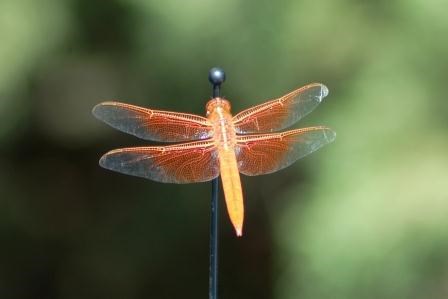
Image courtesy of Jeff Campbell. Sand Creek Massacre National Historic Site (NHS) was established in 2007, in part to preserve and protect the cultural landscape of the massacre. Protection of native biological resources, including animals, is integral to preserving the cultural landscape. Sand Creek Massacre NHS is primarily composed of shortgrass prairie and sage shrubland. Sandy Creek, an intermittent stream, crosses the site. Shortgrass prairies support numerous animal and plant species, including federal and state listed endangered, threatened, and candidate species. Species that have adapted to the specific conditions of their environment can be indicators of a healthy ecosystem. These specialized species are susceptible to changes in water availability, temperature, elevation, geology, and land use. In 2006, 11 special-status species were documented in Sand Creek Massacre NHS, including species listed by the State of Colorado, federal agencies, and conservation organizations. These species are: the burrowing owl, mountain plover, black-tailed prairie dog, Swainson’s hawk, scaled quail, northern harrier, loggerhead shrike, bleached skimmer dragonfly, red-headed woodpecker, white-faced ibis, and northern leopard frog. Lesser prairie chickens historically occupied Sand Creek Massacre NHS, though the species may be locally extinct (extirpated) from the area.
The diverse habitat within Sand Creek Massacre NHS supports numerous species of birds with a wide range of habitat needs. Stopover locations, such as the site’s riparian habitat, are limited in the prairie and are vital to long- and short-distance migratory birds. Stopover habitat is relatively uncommon in shortgrass prairie ecosystems, such as Sand Creek Massacre NHS, and allows birds to replenish essential reserves for their flight to breeding areas. The combination of prairie and riparian habitats in the site are uncommon in shortgrass prairie ecosystems and are important to numerous bird species, including species of concern. The mix of birds detected in the site suggests the habitat is healthy. At least 59 bird species have been recorded in the site.

NPS Among the small mammals present in the site, the presence of black-tailed prairie dogs increase the probability of sensitive species occurring at Sand Creek Massacre NHS, as numerous species depend on habitat provided by prairie dogs and their burrows. Prairie dogs in Sand Creek Massacre NHS increases habitat diversity and contribute to grassland ecosystem processes integral to the long-term viability of the existing native plant community and allied species. Only one species of fish, the Plains killifish, is recorded in the park. It is possible the Arkansas darter, a threatened species listed by the State of Colorado and a candidate for federal protection under the Endangered Species Act, is also present. Continued research in Sand Creek Massacre NHS will expand our knowledge of the resources preserved and protected in this area. For more in depth information on the animals and other natural resources of Sand Creek Massacre NHS, explore the links under Nature & Science or follow the links on this page. Published 8/08
NPS |
Last updated: April 24, 2025
